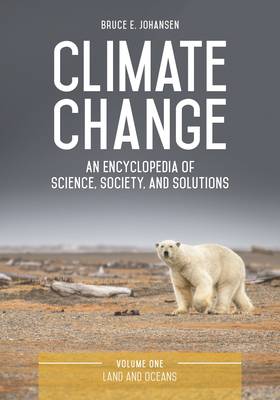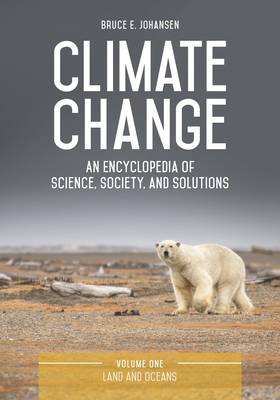
- Afhalen na 1 uur in een winkel met voorraad
- Gratis thuislevering in België vanaf € 30
- Ruim aanbod met 7 miljoen producten
- Afhalen na 1 uur in een winkel met voorraad
- Gratis thuislevering in België vanaf € 30
- Ruim aanbod met 7 miljoen producten
Climate Change
An Encyclopedia of Science, Society, and Solutions [3 Volumes]
Bruce E JohansenOmschrijving
How are the behaviors of birds, butterflies, and other migratory animals connected to climate change? What does the term "thermal inertia" mean, and what does this geophysical effect have on predicting what the planet's future will be like? What is the context for the effects we are seeing on various forms of animal life, from migrating birds to polar bears to mosquitoes that transmit Zika and other diseases?
Climate Change: An Encyclopedia of Science, Society, and Solutions combines entries describing Earth's variable climatic history, references to scientific literature, weather record data, and selected primary documents to present readers with a comprehensive account of global warming's effects worldwide. By examining verifiable, quantitative information such as the frequency and intensity of hurricanes and changes in the hydrological cycle, as well as clear patterns and trends of alternating droughts and deluges and wildfires, melting ice, and rising seas, readers will be able to understand why scientists are so concerned about the future of our climate.
Researchers will benefit from detailed explanations of scientific topics such as thermal inertia, feedbacks, and tipping points; and receive invaluable context on the role of energy use in climate change, including automobiles and air travel. Readers will learn about the role of China in the current global climate and in the future; the widespread effects of climate change on agriculture; and how indigenous peoples' lives are being impacted, from drought and the Navajos to hunters' lives in the Arctic. The work concludes with thought-provoking debates regarding potential solutions, from wind power and solar power to geo-engineering.
Specificaties
Betrokkenen
- Auteur(s):
- Uitgeverij:
Inhoud
- Aantal bladzijden:
- 1248
- Taal:
- Engels
Eigenschappen
- Productcode (EAN):
- 9781440840852
- Verschijningsdatum:
- 15/09/2017
- Uitvoering:
- Hardcover
- Formaat:
- Met stofomslag
- Afmetingen:
- 185 mm x 262 mm
- Gewicht:
- 3061 g

Alleen bij Standaard Boekhandel
Beoordelingen
We publiceren alleen reviews die voldoen aan de voorwaarden voor reviews. Bekijk onze voorwaarden voor reviews.











